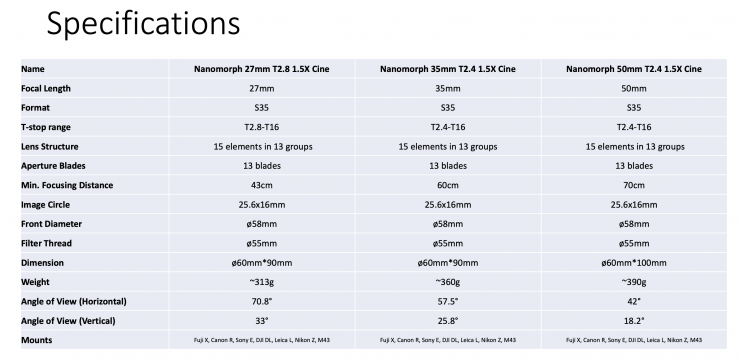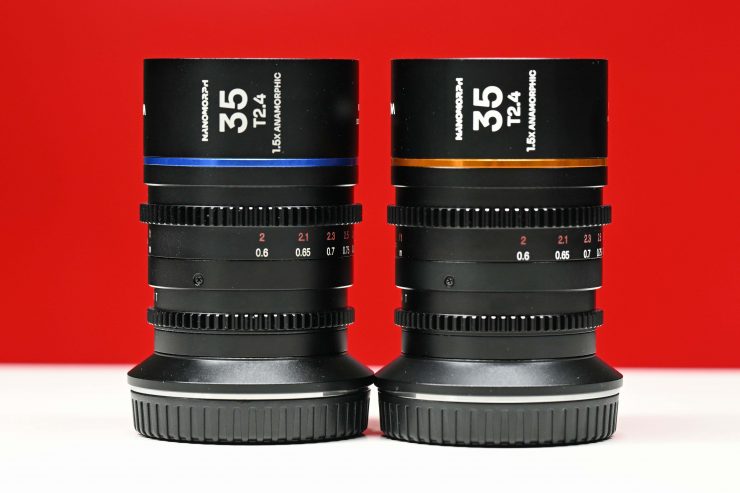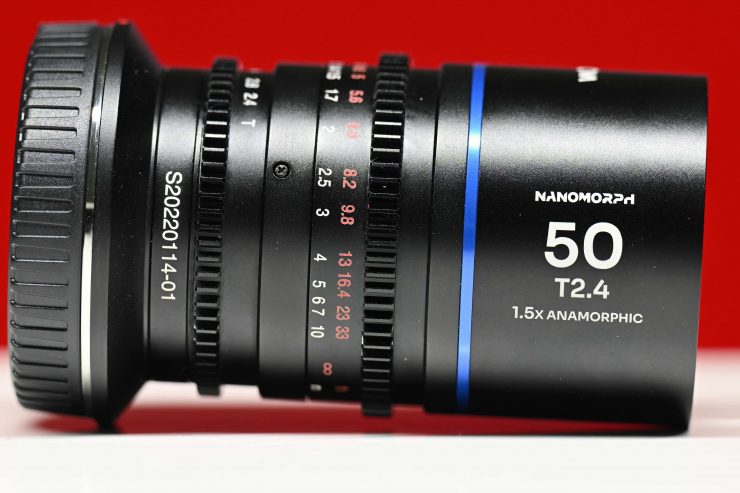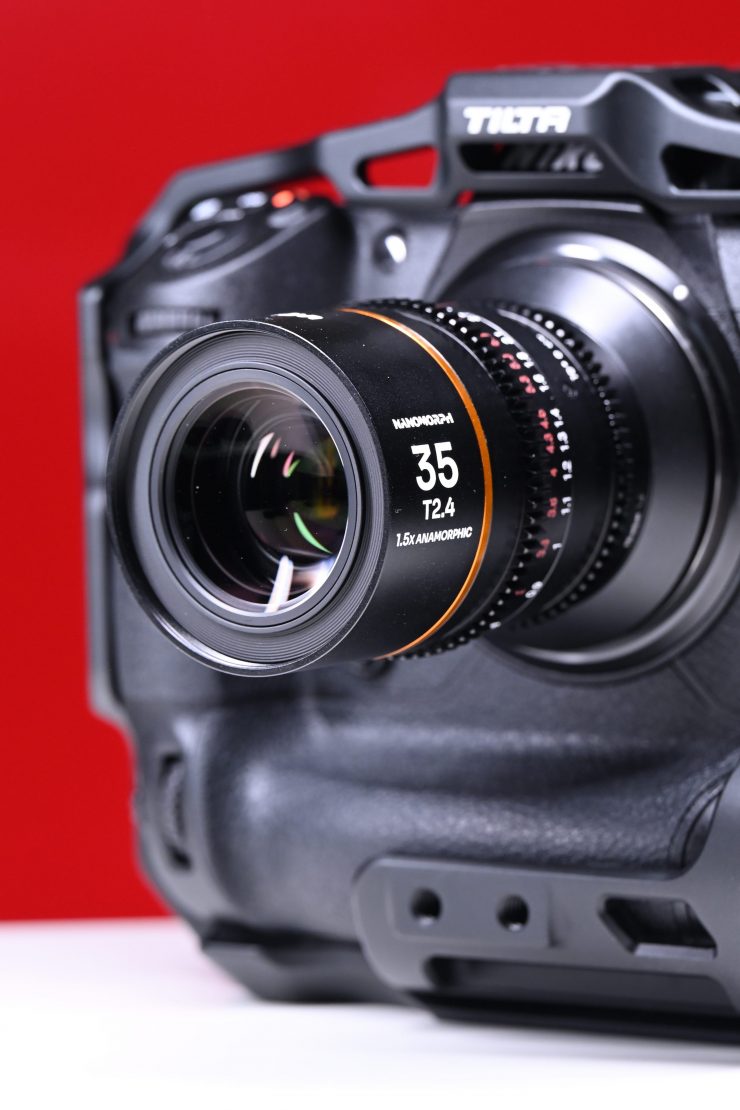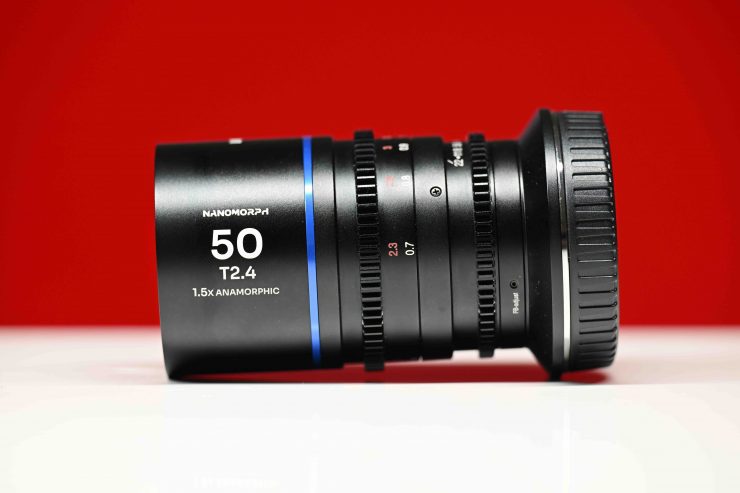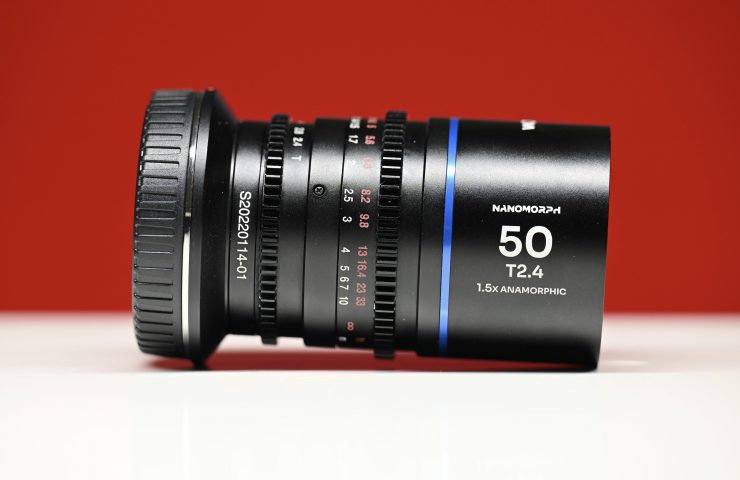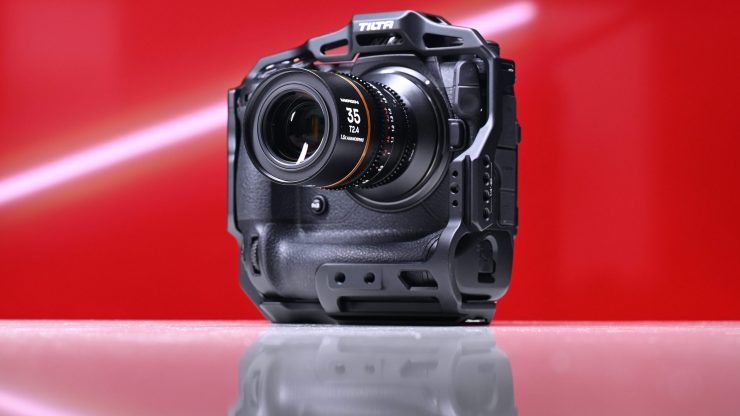
Laowa has unveiled its new Nanomorph S35 1.5X Anamorphic lenses. These are being touted as affordable, lightweight anamorphic lenses for use with mirrorless hybrid and digital cinema cameras.
The lenses cost $999 USD each which makes them very affordable and puts them within reach of users of smaller mirrorless hybrid cameras who may not have a lot of money to spend.
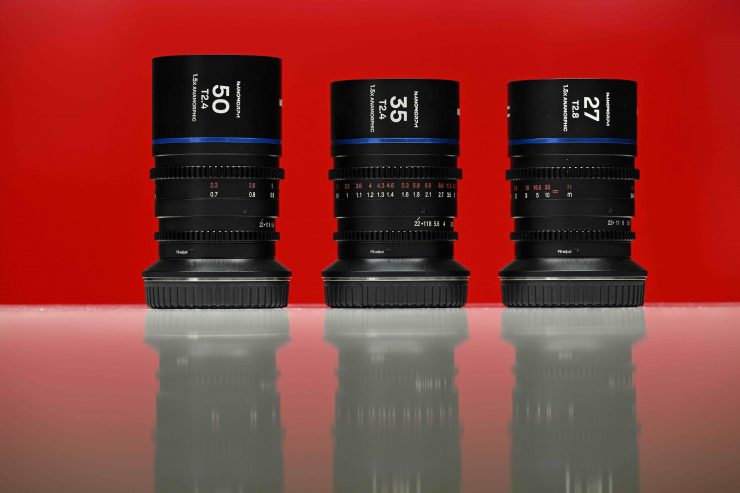
The Nanomorph are available in three focal lengths:
- 27mm T2.8 1.5X
- 35mm T2.4 1.5X
- 50mm T2.4 1.5x
These focal lengths are reasonably close together and some users would have probably preferred to have seen a 75mm made available.
Two Different Versions
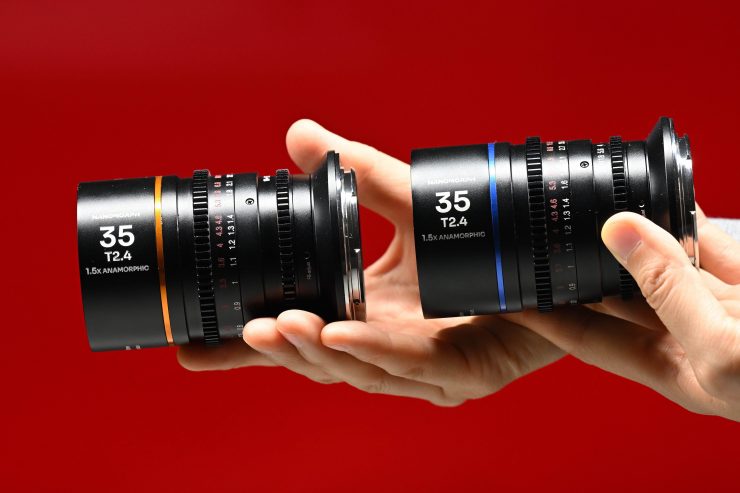
The Nanomorph lenses are available in two different versions. You can choose from having orange/amber horizontal flares or blue horizontal flares.
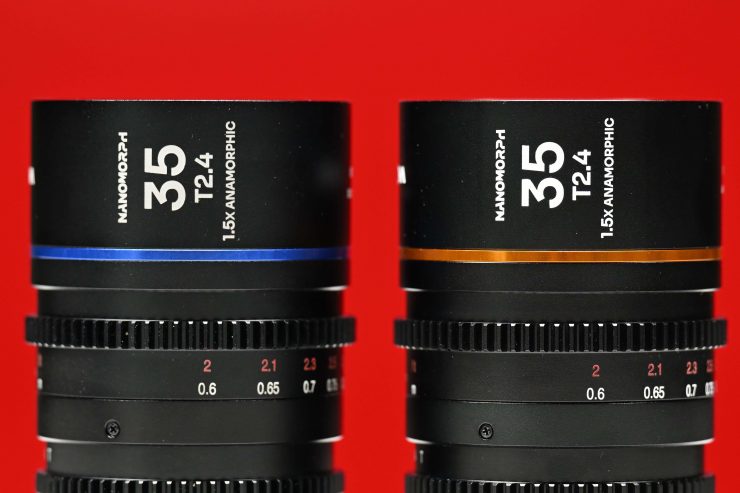
The lenses look physically identical apart from the different colored rings.
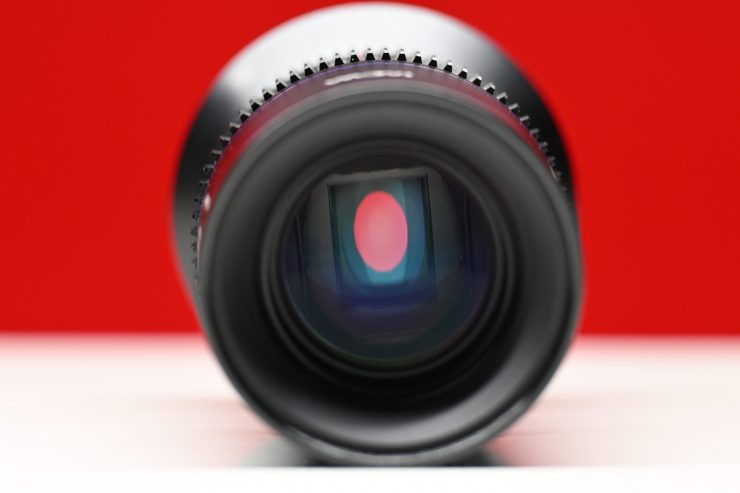
Blue horizontal flares are very common with ‘affordable’ anamorphic lenses, so I am glad Laowa has made a version with orange/amber horizontal flares.
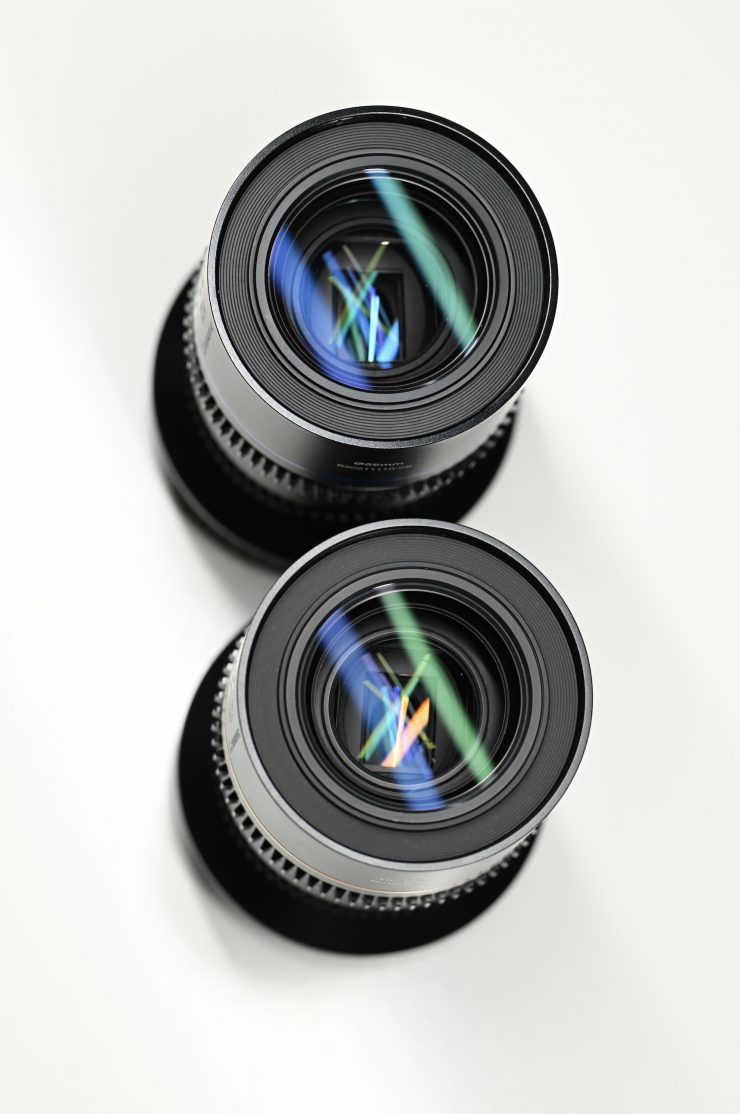
Personally, I would have preferred something more neutral that takes on the color of the light source you are pointing towards, but to each their own.
Key features
- Low focusing breathing
- 1.5x squeeze ratio to create stretched oval bokeh
- Constant squeeze ratio at different focusing distance
- Large image circle that is able to cover some formats in FF
- Various mount available
What mounts do they come in?
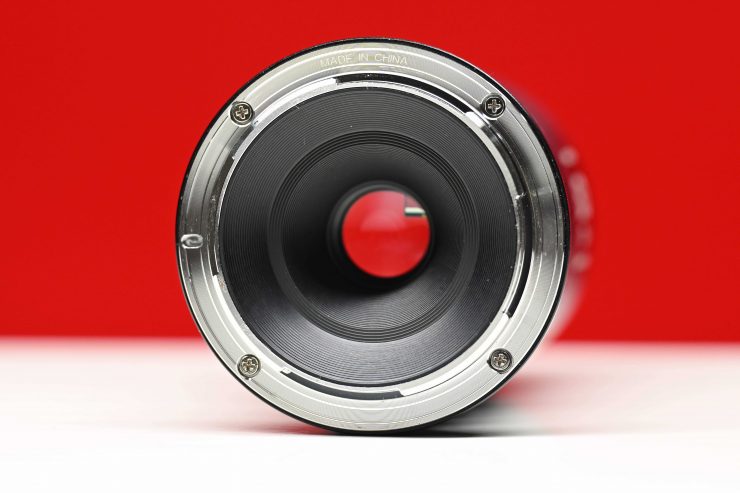
The lenses are available in Fuji X, Canon RF, Sony E, Leica L, DJI DL, Nikon Z, and M4/3 mounts.
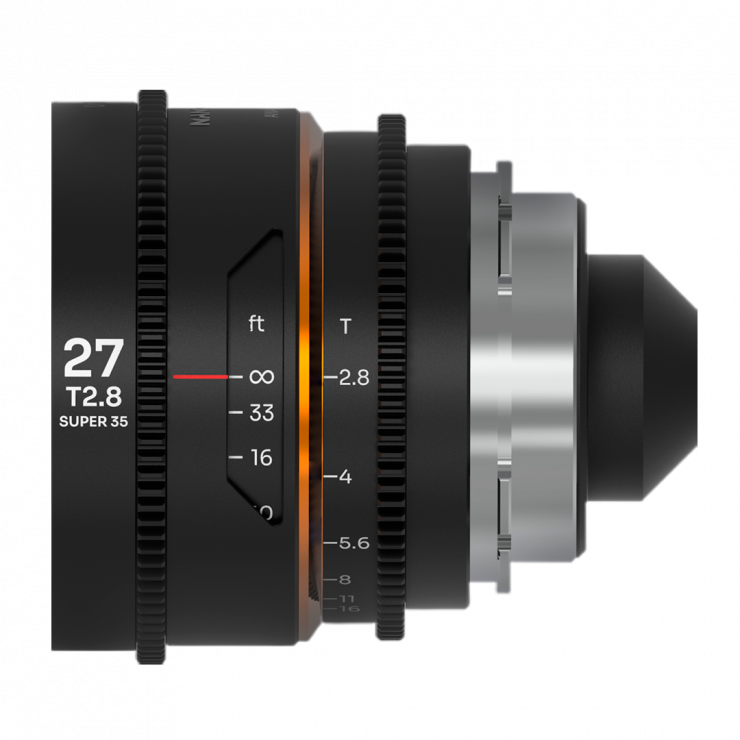
PL Mount 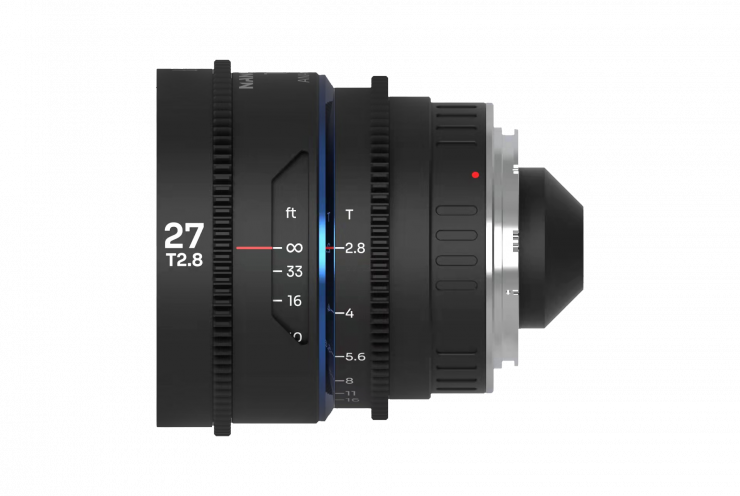
EF Mount
Laowa will also be making Canon EF and PL mounts available as well, however, they are going to take longer to ship than the other available mounts.
Concept
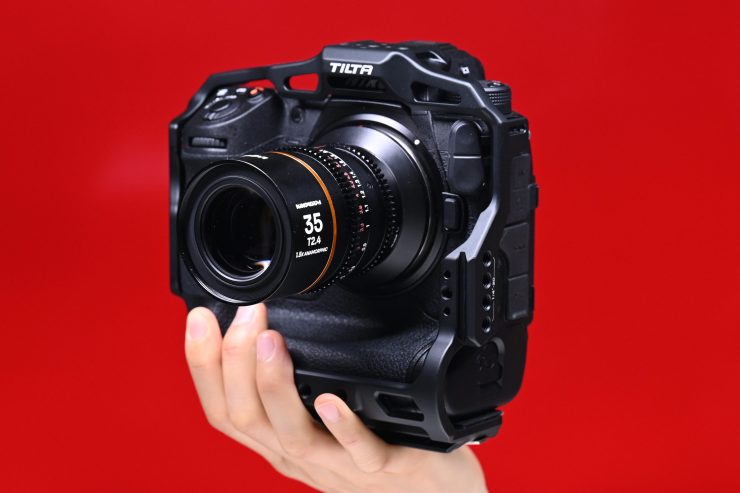
The concept behind the Nanomorph S35 1.5X Anamorphic lenses was to make them compact and lightweight so they could be used on small-sized cameras, gimbals, and even drones.
Laowa has a strong reputation for making interesting, and sometimes quite unique lenses, and that mindset looks to have somewhat carried over to the Nanomorph.
Image Coverage
The Nanomorph S35 1.5X Anamorphic lenses, as their name would apply are only supposed to cover an S35-sized sensor. However, their actual image circle coverage is 25.6mm x 16mm.
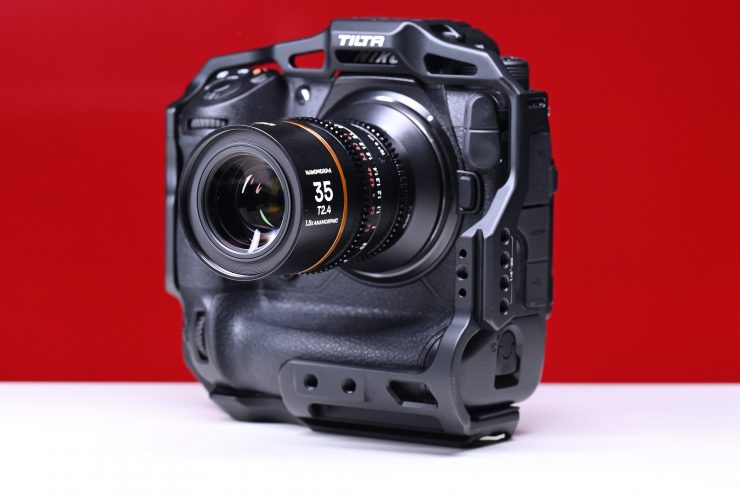
Despite being called S35 lenses, they will actually cover larger sensors. I was testing out the Nikon Z mount versions of the lenses on a Z9 and here is what I found:
| RECORD SETTING | VIGNETTING | |
| 27mm T2.8 1.5X | FX 3840 x 2160 FX 7680 x 4320 | No* Yes |
| 35mm T2.4 1.5X | FX 3840 x 2160 FX 7680 x 4320 | No Yes |
| 50mm T2.4 1.5x | FX 3840 x 2160 FX 7680 x 4320 | No Yes |
* There is a tiny, tiny bit on the far edges, but not what I would consider any type of serious vignetting. By the way, for those who don’t know, FX refers to full frame on Nikon cameras.
I was actually pleasantly surprised that all of the lenses could be used in the FX mode when shooting in UHD on the Z9. If you switch to 8K UHD you get massive vignetting, especially on the 27mm and 35mm.
I can’t comment on how these lenses would work on other camera systems when shooting full-frame as I only had access to the Nikon Z mount versions.
Size & Weight
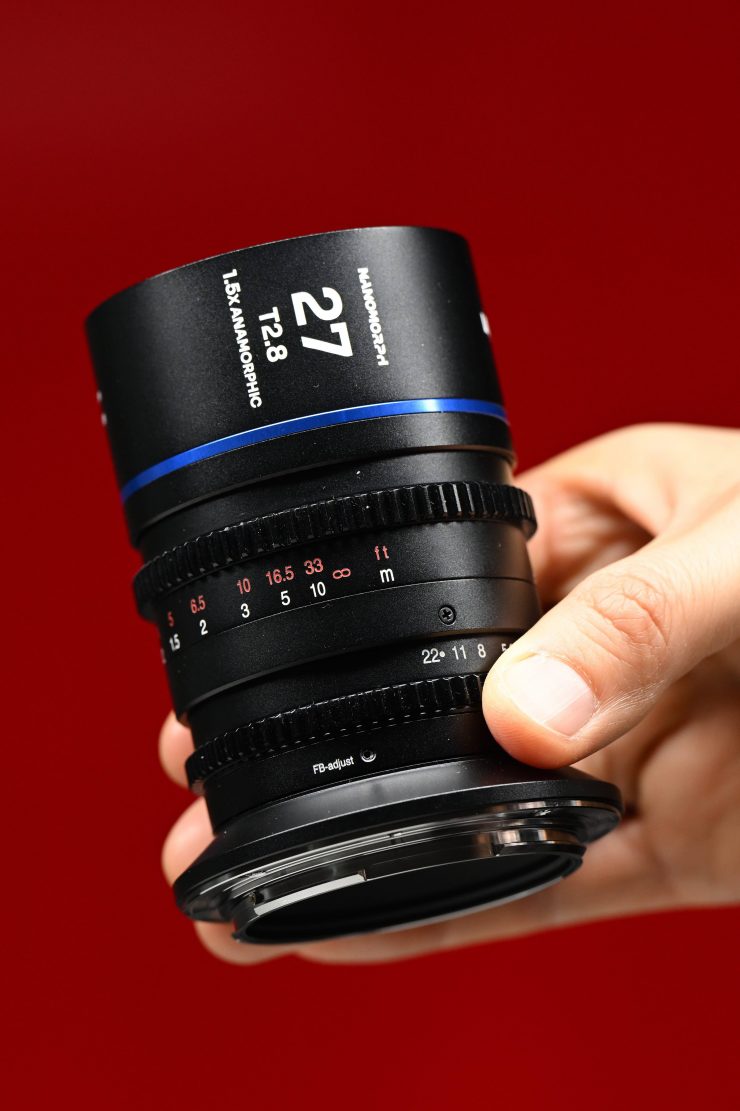
The Nanomorph S35 1.5X Anamorphic lenses are really small and I was surprised when I first saw them. The 27mm T2.8 weighs 331g / 11.67, the 35mm T2.4 weighs 360g /12.69 oz, and the 50mm T2.4 tips the scales at 390g / 13.75 oz.
This small, compact size makes them suitable to use on a large array of different types of cameras.
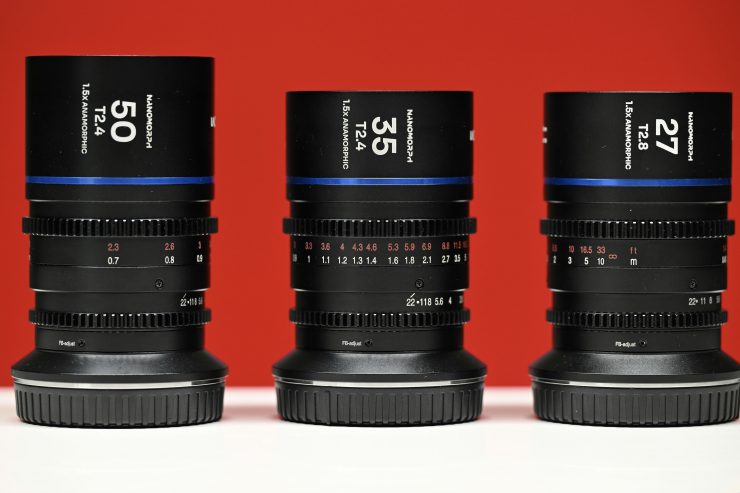
The 50mm is a little longer than the other two lenses. It is nice that all of the focus and iris rings are located in the exact same place on all three lenses. If you are using them with a manual follow focus or focus motor this makes lens changes quicker.
Build Quality
The Laowa Nanomorph lenses feature an all-metal construction. They are nicely made considering their relatively low cost.
The focus ring is reasonably well dampened, but I didn’t find it to be completely consistent when turning from close focus to infinity. The aperture ring is a little noisy when you turn it. In saying all of this, these weren’t new lenses that I was trying out as they had already been sent to countless people before me. Some reviewers don’t always treat products with the same respect as if they had purchased something themselves. In that regard, it is hard for me to comment on some of the build quality elements without trying a brand new lens.
With affordable cine lenses, it is often the case where the consistency of the quality control from lens to lens may vary.
Markings
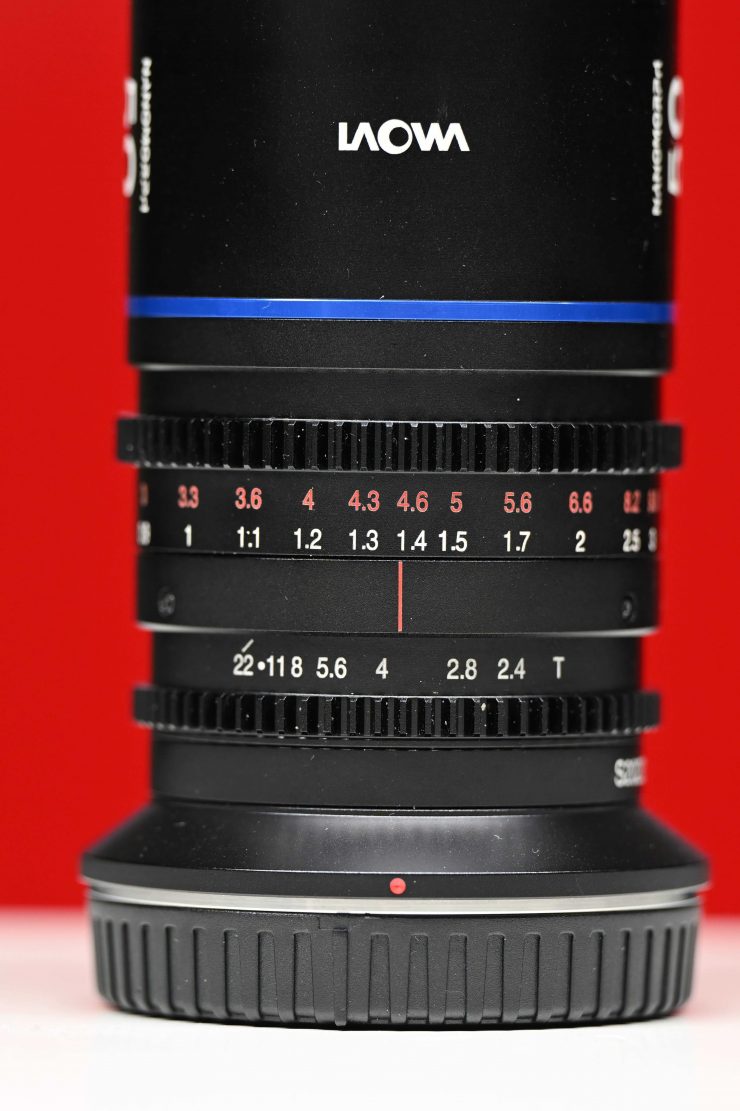
The markings on the lens are shown in both feet and meters, which although a little unusual, is quite common on more budget-priced cine lenses. I suppose this saves on making multiple versions and it helps to keep the cost down. The markings are not overly clear and there aren’t actually any direct marks to show you exactly where you are positioned. They are also only really visible on the top of the barrel.
As this lens is very much being targeted at solo shooters and owner/operators that is presumably why the markings are placed where they are. I don’t personally see this as any kind of problem given the target audience for these lenses, but it is worth mentioning.
Other Features
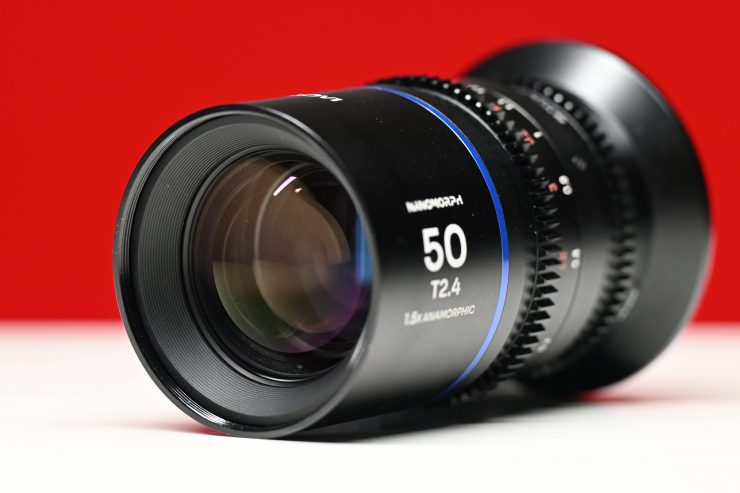
The lens has a 55mm front filter diameter so you can attach filters.
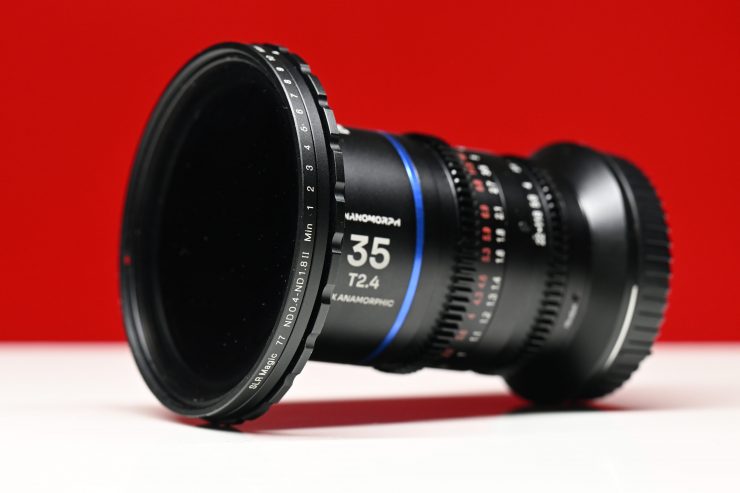
55mm is pretty small and anyone shooting with a camera that doesn’t have built-in ND will probably end up running a larger sized variable ND filter with a step-up ring.
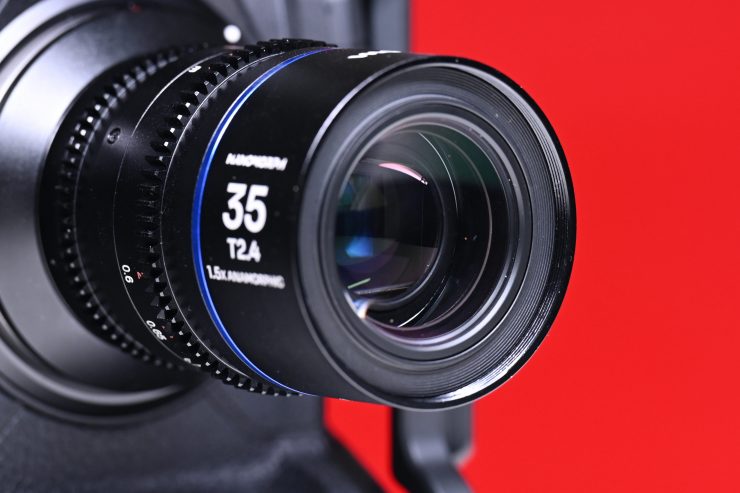
The minimum focusing distance is never great on anamorphic lenses, and that is true of the Nanomorph as well. Below are the minimum focusing distances for all three lenses.
| MINIMUM FOCUSING DISTANCE | |
| 27mm T2.8 | 43cm / 16.93″ |
| 35mm T2.4 | 60cm / 23.62″ |
| 50mm T2.4 | 70cm / 27.56″ |
Laowa doesn’t list what the focus throw is but I would estimate it to be somewhere between 270-300 degrees. Both the iris and focus rings feature industry-standard 0.8 pitch gears. It is possible to manually pull focus from infinity to the minimum focusing distance in one go, despite the large degrees of rotation. This is mainly because the physical size of the lens barrel is pretty small.
Optical Structure
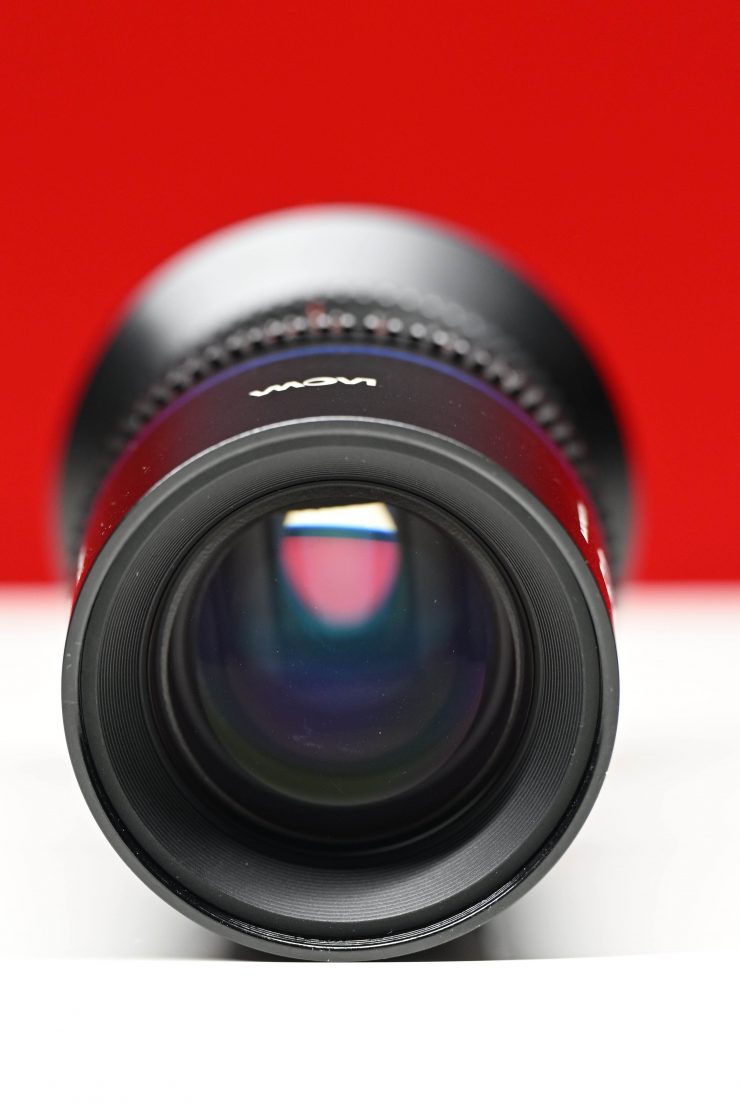
The optical structure of all three lenses consists of 15 Elements in 13 Groups. This is quite a lot of glass in a small lens. The lenses also have 13 aperture blades.
Lens Breathing
I tested out the lenses by doing large focus throws and there is breathing, but for anamorphic lenses at this price, it is fairly well controlled.
Anamorphic breathing appears in a different way than when using a normal spherical lens. With a spherical lens, breathing gives the appearance that the focal length is changing. However, with anamorphic lenses, vertical stretching occurs with the background. So when you adjust focus from something close to something further away, the background takes on a squeezed appearance. Hence why you see oval instead of round bokeh.
With anamorphic lenses, the more you stop the lens down, the less the out-of-focus object’s appearance will change. If you shoot wide open and pull focus the out-of-focus objects will change shape more dramatically.
Older anamorphic lenses such as Lomo’s and Kowa’s can breathe a lot. Newer anamorphic designs from companies such as Zeiss and Cooke have a lot less breathing. The popular Panavision E Series anamorphic lenses retain true anamorphic artifacts such as disproportional vertical focus breathing.
Sharpness
For affordable anamorphic lenses, the Nanomorph’s are still reasonably sharp even when used wide open. At T5.6 or T8 they are at their sharpest, but most people won’t be buying these lenses to shoot them at those T stops. The above tests were done in an S35 crop mode.
If you are shooting with the focus set at infinity you may well find that they don’t appear to be as sharp. This could well be that the back focus is slightly off when you first get the lens. You can adjust the FB on the lens using a 0.9mm hex key.
What I noticed, and this comes as no surprise, is that if I used the lenses in full-frame mode the sharpness of the lenses does seem to take a hit.
The 27mm and 35mm appear to me to be sharper than the 50mm, and to my eye, the 35mm is the sharpest of the three. You will have to forgive the moire on the shots that you can see on the edge of the lightbulb, the Nikon Z9 does seem to exhibit strong signs of this in its DX crop mode when shooting video.
In technical tests, these are not lenses that are ever going to win people over. Technical tests are more unforgiving that a lot of real-world shooting situations and they are done to look very closely at potential optical flaws.
In the real world, most lenses are going to look a lot better than they will in technical tests. The reason I do tests like this is it gives you a benchmark when comparing other lenses. The robot has a very fine pattern on its surface and this is very helpful in seeing sharpness and detail.
Lens Flare
Let’s face it, the reason a lot of people want to use anamorphic lenses is because of the interesting flares you can obtain. Yes, they can be overly used, and sometimes less is more, but the probable target audience for these lenses is probably looking for prominent streaks.
The Nanomorph lenses are capable of producing interesting flares with some character, but again, it really depends on your taste as to what you think looks good.
Used wide open, or relatively wide open, you do get that streak that everyone is familiar with. Whether you prefer the blue streak or the orange/amber steak is again a personal thing. I personally found that it really depends on what you are shooting as to what color looks better. I found that both streaks were a little overpowering for my tastes and even though I thought I might prefer the orange/amber streak, I often found that it looked a little artificial. Again, this is my personal take.
Out of the three focal lengths I actually preferred the flare I was getting on the 27mm T2.8 and 50mm T2.4. I didn’t like the flare as much on the 35mm T2.4, but maybe that was because of the color. When you get too much direct light the amber/orange streaks look odd, at least in my opinion.
The lenses still maintain a decent amount of contrast, even with a lot of light shining down the barrel.
Chromatic Aberration
The lenses do exhibit some signs of chromatic aberration if you look closely enough, but it wasn’t anything that I personally found to be too distracting.
Bokeh
Oval-shaped bokeh is another drawcard of anamorphic lenses. The ability to create interesting looking out of focus areas can certainly be used to help to enhance a shot. I personally prefer out of focus areas in the foreground rather than the background when using lenses like this.
The bokeh is reasonably good for a lens with a T2.4 aperture. It does have that oval appearance, but because it is a 1.5x squeeze anamorphic it is going to be as overly pronounced as a 1.8x or 2x.
Color Tone
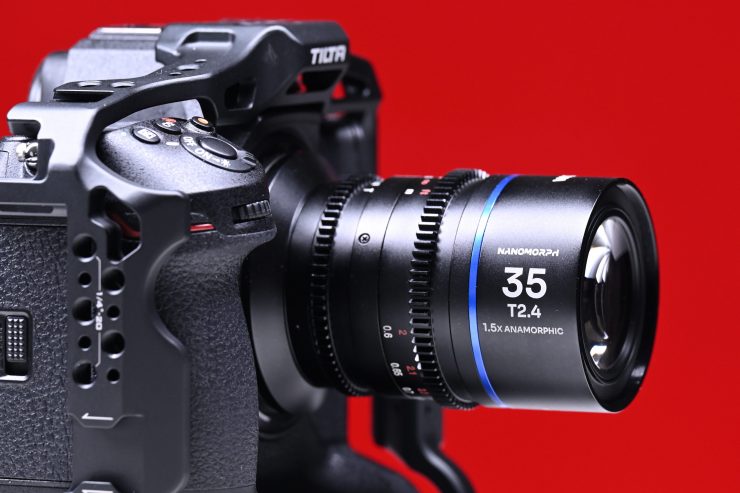
The lens is fairly neutral when it comes to color, if anything it is slightly cooler in tone. I would liken the color tone to a lot of Zeiss lenses.
The color tone of a lens is really something you should look at closely if you are going to be using both prime and zoom lenses from different manufacturers. Certain prime and zoom lenses work better together than others. What will work for you will also depend on what camera you are using.
Why 1.5x?
Laowa undoubtedly chose to adopt a 1.5x squeeze design to balance the anamorphic characters as well as the resolution of the image. The 1.5x squeeze can produce a cinematic widescreen 2.39:1 aspect when paired up with 4:3 sensors. When paired up with 16:9 sensors, much less data (than 2X anamorphic lens) is needed to be cropped away to create the desired 2.39:1 ratio.
In a lot of ways, particularly for lenses at this price, the decision to go with a 1.5x anamorphic makes a lot more sense than going with a 2x. 1.5x is more versatile and it allows the lens to be used on more cameras. Making a 1.5x anamorphic is also a lot easier than creating a 1.8x or 2x anamorphic.
Real World Thoughts
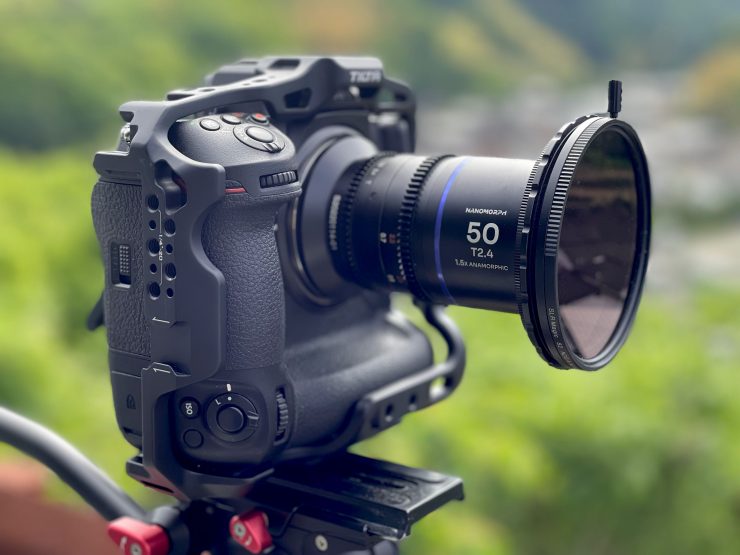
Affordable anamorphic lenses can be fun to use on certain projects as long as you are fully aware of their strengths and weaknesses. You really need to think carefully about what you are filming, what focal lengths would be required, and what the minimum focusing distance is likely to be.
Above you can see a few example shots I got with the lens. I am sorry I couldn’t do more, but I am in the middle of a lot of projects at the moment and my time is very limited. I only had about 30min to grab some quick shots during a break.
In my own personal opinion, there is nothing wrong with the lenses, but there is also nothing that jumps out and wows you either.
Yes, there is some pincushion distortion, but you know what, I didn’t find it to be a huge issue. Most anamorphic lenses are designed to be imperfect and have optical flaws.
The build quality and mechanics are reasonably good, especially at this price point. The iris and focus are reasonably well-weighted, but the focus rings don’t seem to have even tension throughout their whole range.
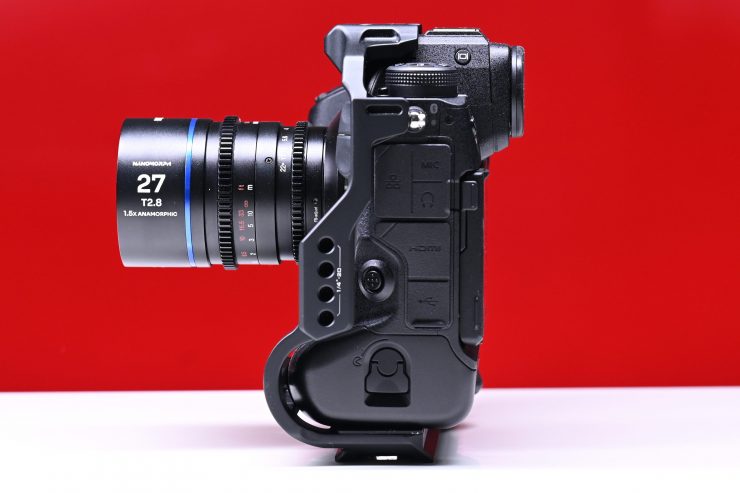
As the lenses are quite small you can easily find some space for them in your bag.
More Focal Lengths Coming?
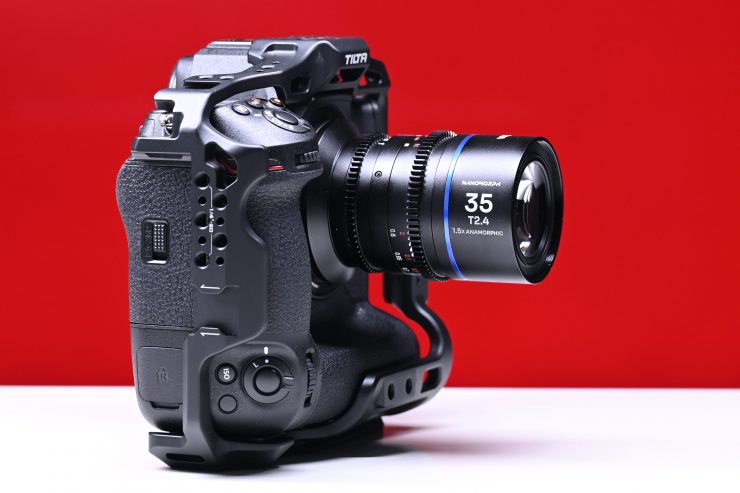
Laowa has said that they will also be making focal lengths of 65mm and 85mm in the future. It will also be interesting to see if they make full-frame versions down the track. I think they will gauge the popularity of the Nanomorph lenses to see what the interest is like.
Do you really need an anamorphic lens?
I think in principle a lot of people like the idea of shooting with anamorphic lenses, but whether or not you actually need to may be a completely different story. Depending on what you do there may well be little to no demand to shoot anamorphic. For a lot of shooters, it makes more sense to rent anamorphic lenses rather than to own them, however, with quite a few budget-friendly options now on the market, they are affordable enough to purchase.
While you may find the look of anamorphic esthetically pleasing, a lot of shows will not shoot anamorphic if they are going on broadcast television, simply because the broadcasters don’t want viewers complaining about black bars on top and below the image. With more and more online content being created by Netflix, Amazon, Disney, etc. this isn’t really an issue. Online steaming entities are often more than happy to have productions shoot with anamorphic lenses. If you producing content that will end up in a widescreen aspect ratio you could easily mix anamorphic and other lenses together. Also if you are making your own content then go for your life and use whatever you like.
In my honest opinion, it is usually better to just rent good anamorphic lenses for projects that require them. Although, in saying that, buying affordable anamorphic lenses makes sense if you are someone who is going to use them a lot for the type of work you do.
Price & Availability
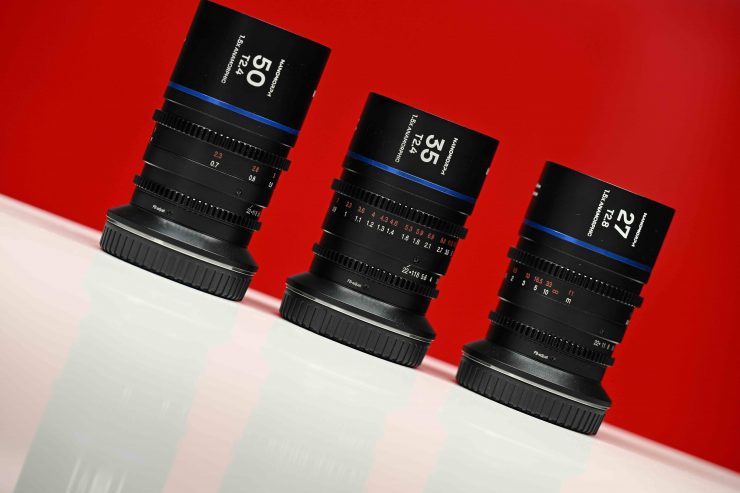
As I already mentioned the lenses will retail for $999 USD each and you will also be able to buy them in a three-lens set.
Competition
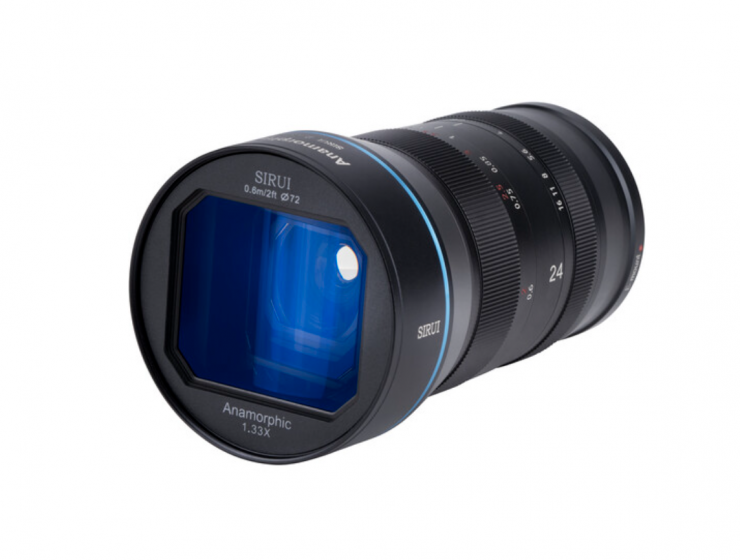
There are quite a few affordable anamorphic lenses that are now available or are coming out soon. 1.5x isn’t overly common and the only other 1.5x anamorphic lenses I can currently think of are the P+S Technik TECHNOVISION 1.5X.
As far as affordable anamorphic lenses go, competition arguably comes from Sirui, Vazen, Great Joy, and SLR magic
So how do the Laowa Nanomorph lenses compare price-wise to some of the competition?
| PRICE | |
| Sirui 24mm f/2.8 Anamorphic 1.33x Lens* | $999 USD |
| Sirui 50mm f/1.8 Anamorphic 1.33x Lens * | $699 USD |
| Sirui 75mm f/1.8 1.33x Anamorphic Lens ** | $899 USD |
| Great Joy 50mm T2.9 1.8x** | $1,279 USD |
| SLR Magic 1.33x Anamorphot-CINE Lens Set with 35, 50, 70mm Lenses *** | $8,999 USD |
| Vazen 28mm T2.2 1.8x Anamorphic Lens **** | $3,250 USD |
| Vazen 40mm T2 1.8x Anamorphic Lens **** | $3,250 USD |
| Vazen 65mm T2 1.8x Anamorphic Lens **** | $3,250 USD |
* Available in Canon EF-M, Fiji X, MTF, Nikon Z, Sony E
** Available in Sony E, Fuji X, & MTF
*** Available in PL or EF mount
**** Available in M4/3 or canon RF mounts (only covers a M4/3 sized ensor)
Is having an Anamorphic lens that only covers S35 sensors worth buying?
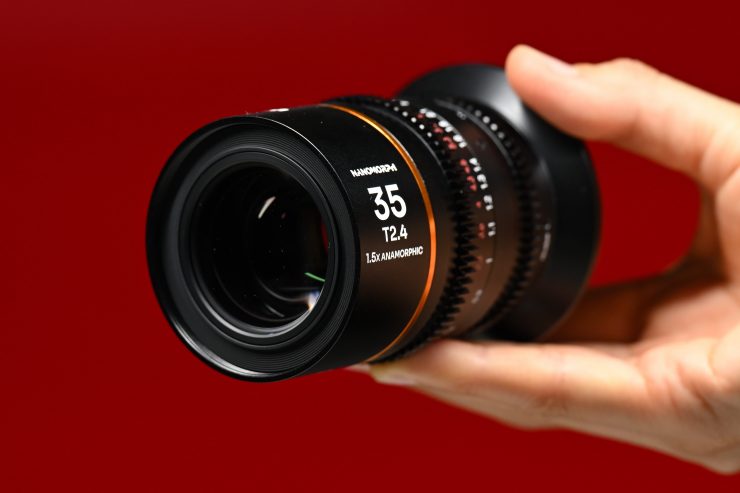
With lots of relatively affordable mirrorless hybrids and full-frame, digital cinema cameras available does it make sense to buy an anamorphic lens that only covers S35-sized sensors? In my opinion, yes. Given the lenses’ low price and the fact that they can still be used in some shooting modes on full frame cameras then it does make sense.
Most full-frame cameras also have S35 or crop modes that you could also use with these lenses. Granted, some of the crop options on ceratin cameras can leave a lot to be desired, but generally, you can still obtain good results. Yes, full-frame lenses would arguably be more practical as they could be used on a wider variety of cameras, but if Laowa had made these lenses full frame then they would have been considerably larger, heavier, and more expensive.
Conclusion
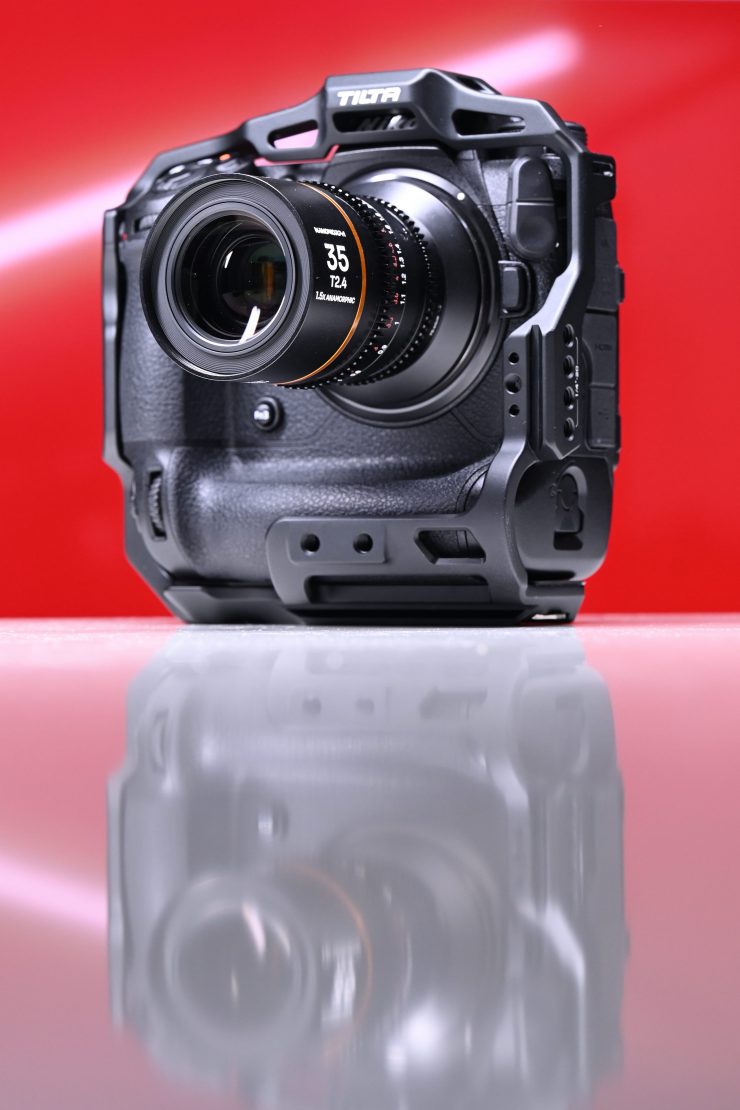
Let’s just get this out of the way. Anyone who is expecting these lenses to optically rival or perform, as well as much more expensive anamorphic lenses, is living in a dream world. These are budget anamorphic lenses and you need to remember that clearly. That’s not to say you can’t obtain good results, because you certainly can. One of the drawcards of using an anamorphic lens for a lot of DPs is that they aren’t optically perfect. In that regard, there is certainly a big market out there for affordable options. It is still impressive to see new anamorphic lenses coming out that won’t break the bank. If someone had said 5 years ago that you could get 3 anamorphic cine lenses that will actually cover a lot of 4K shooting modes on full-frame cameras for less than $3,000 USD, people would have been saying take my money!
The lenses are capable of helping to produce nice imagery and they are very compact and affordable. Anamorphic isn’t going to be everyone and even those wanting to shoot anamorphic, may well prefer a lens with a 1.8x or 2x squeeze.
The lenses don’t have a lot of character and they offer a fairly clean look without much chromatic aberration.
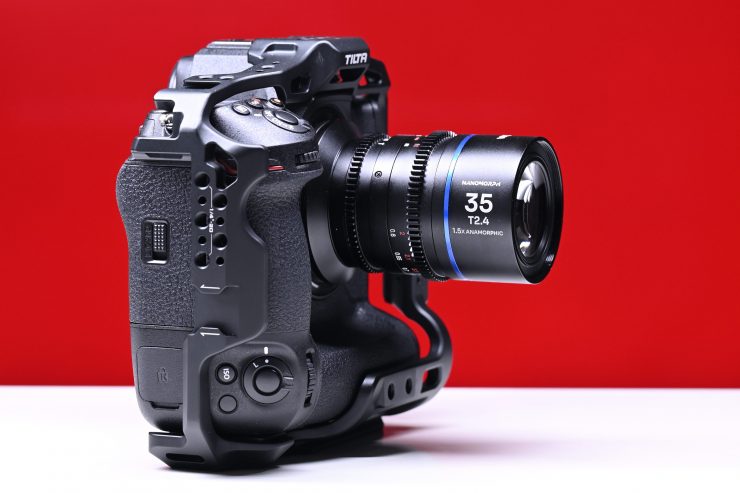
The mechanics and build quality are decent for sub $1,000 USD lenses. The large focus rotation allows you to make finite focus adjustments without the associated problems of using stills glass. The barrel is significantly small enough that you can pull focus from infinity to the minimum focus distance by hand, but this does require a little bit of effort.
As I mentioned near the top of the review, Laowa is known for making unique and interesting lenses, and the Nanomorph certainly follows that same concept.
I enjoyed using the Nanomorph lenses, and for the price and I think they could be reasonably popular for users of mirrorless hybrids and some digital cinema cameras. I wasn’t the biggest fan of the overly pronounced colored flares, but that’s just my opinion.
No, they aren’t optically perfect, but you know what, I think that is one of the appeals of shooting anamorphic that a lot of people are looking for. The Nanomorph lenses are a solid offering in the affordable anamorphic space but they are going to face stiff competition from a whole range of new lenses that are now starting to appear.
